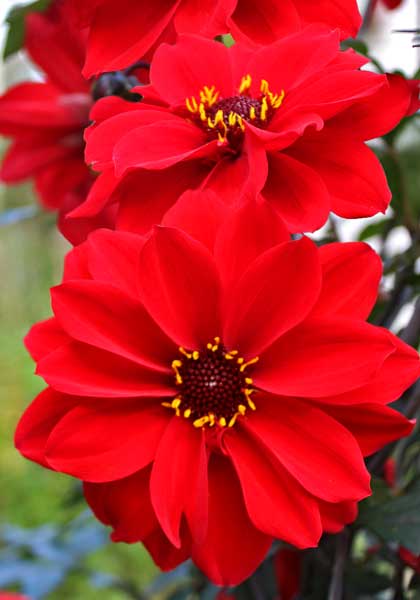Vanessa Elms lives in a charming little 1920s bungalow in the Depot Town neighborhood of nearby Ypsilanti (the Brooklyn of Ann Arbor). She traces her love of plants to tagging along with her parents to local nurseries when she was a child, and after earning a horticulture degree from Michigan State and spending a few years working for a landscape company in Chicago, she returned here a few years ago to join us as our VP for Bulbs.
When I asked her to recommend ONE of her favorite spring-planted bulbs, Vanessa gave me three instead:
‘Mexican Single’ tuberose – “Every year I grow these in clay pots near my living room windows, and their fragrance drifts in nicely on warm summer nights. They’re also a favorite of the hawk moths that visit my garden in the early evening.
‘George Davison’ crocosmia – “Last summer I planted these with some other plants that attract hummingbirds, and they were a big hit. They can be slow to sprout – I actually started to plant annuals over mine because I was sure they weren’t coming up – but they’re definitely worth the wait.
‘Prince Noir’ dahlia – “My all time favorite dahlia! I especially love the contrast of these dark-petaled flowers in a simple white vase.”















